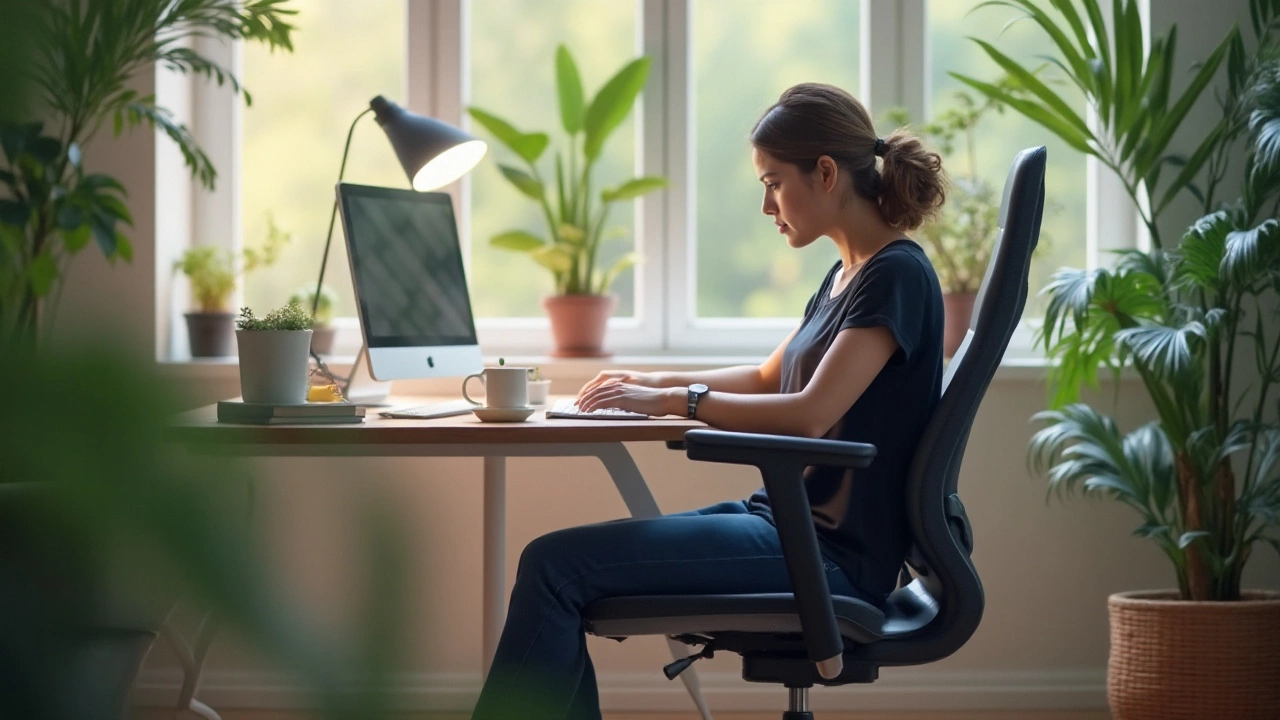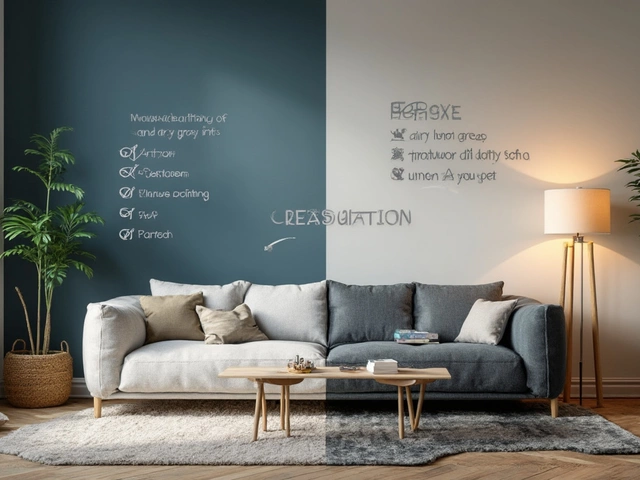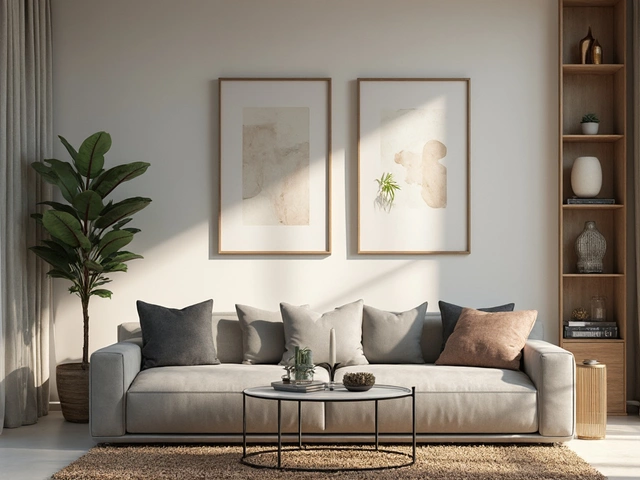
Attention Deficit Hyperactivity Disorder (ADHD) is a term thrown around often, yet its nuances are rarely discussed outside a medical context. In the hustle and bustle of a modern office, ADHD can become particularly challenging, affecting not just personal but also professional lives. While there are many strategies to manage this condition, the often overlooked aspect is the role of environment, particularly the seemingly simple office chair.
When we talk about ADHD, we're talking about three main symptoms: impulsivity, hyperactivity, and inattention. Each finds its unique manifestation in the workplace setting. An office chair designed with these in mind can make a world of difference. Imagine a chair that not only supports your back but also helps calm an active mind, lending a quiet focus amid a whirlwind of distractions.
In this guide, we'll explore the intricate connection between ADHD management and office furniture design. We'll delve into choosing chairs that cater to ADHD needs, providing actionable advice for setting up a workspace that nurtures both comfort and concentration. Join us as we discover how a well-chosen office chair could be more than just a place to sit—it could be a part of your productivity toolkit.
- Understanding ADHD in the Workplace
- Impulsivity and Office Environment
- Hyperactivity and Ergonomic Solutions
- Inattention and Focus Enhancers
- Choosing the Right Office Chair
- Practical Tips for a Productive Workspace
Understanding ADHD in the Workplace
Living with Attention Deficit Hyperactivity Disorder (ADHD) brings unique challenges, especially in the workplace. While ADHD is often associated with childhood behavior, it persists into adulthood for many, presenting a host of difficulties related to focus and day-to-day task management. This can affect every aspect of work life from meeting deadlines to collaborating on team projects. It’s important to recognize that ADHD is not just a lack of attention but a complex cognitive issue that can influence how someone organizes their workload or interacts with colleagues.
Consider the basic structure of a traditional workday—it’s filled with long meetings, casual watercooler conversations, and periods of sustained concentration in front of a screen. Each of these aspects can be particularly challenging for those managing ADHD. Impulsivity might make it hard to sit through extended meetings without interruption, while hyperactivity can manifest as restlessness, leaving the person pacing the hallway or fidgeting at their desks. That’s where the right kind of office chairs make a difference, designed specifically to accommodate movement and provide comfort throughout the day.
Even in such an environment, strengths abound. Many with ADHD thrive in dynamic, high-energy roles where creativity and rapid problem solving are prized. But, without the right support tools like appropriate furniture and a conducive workspace, potential can be stifled. According to Dr. Edward Hallowell, a well-known author on ADHD, "ADHD shouldn't be seen as a limitation but a different lens through which some of the most innovative solutions arise."
What often goes unaddressed is how the design of a workspace can contribute to either exacerbating or alleviating the symptoms of ADHD. For instance, open-plan offices may seem buzzy and modern, yet they can be a sensory nightmare for someone struggling with inattention. By having dedicated spaces equipped with ergonomic office chairs that allow for slight movements without disruption, employers can create an environment that embraces these differences, making productivity a more achievable goal for everyone.
Creating an ADHD-friendly workplace is not just about helping the individual; it's about enriching the entire office atmosphere. By fostering an inclusive environment that takes into account different ways people work best, companies can cultivate a workplace culture that values diversity and promotes various paths to innovation and success. This approach can help in not just the retention of talented employees but also in tapping into the creative potential that diverse teams bring.
Impulsivity and Office Environment
At the crux of ADHD lies impulsivity—a tendency to act spontaneously without thinking through the consequences. This can be particularly disruptive in an office environment where tasks often require sustained attention and measured responses. Imagine an individual seated at their desk, trying to concentrate on a pending report. Their mind suddenly shifts, a random thought crosses their brain, and within moments, they might find themselves on a completely different task, leaving their original work abandoned mid-string.
Office environments can either exacerbate or help alleviate impulsivity. An essential element to consider is the physical setup, particularly the office chair. Chairs that support the back effectively can reduce the physical discomfort that often leads to restless shifting and potentially impulsive acts. But it’s not just about comfort; it’s about creating an environment that can channel impulsivity into productivity.
Ergonomics plays a huge role here. An office chair that allows for moderate movement, such as a swivel function, can offer just enough activity to help with focus. It allows an individual to release excess energy without needing to abandon their desk. Investing in a chair with these attributes can be crucial for someone managing ADHD symptoms. As Dr. James Rufus, a leading expert in workplace ergonomics, notes,
"A well-designed office chair is not just a seat; it's a tool that can profoundly influence your ability to concentrate and manage impulsivity."
Moreover, setting up the desk to minimize distractions is another strategy to mitigate impulsivity. Keeping only relevant materials within reach can prevent the temptation to drift off task. This spatial organization combined with an ergonomic chair steers the workspace towards being an enabler of productivity rather than a hindrance.
A representative study highlighted this point perfectly. A group of participants using ergonomic chairs reported a 20% decrease in involuntary task-switching as compared to those with standard seating arrangements. This finding underscores how something as simple as a chair can become a significant factor in managing ADHD symptoms in the professional world.
To wrap up this examination of impulsivity within an office setting, it becomes clear that small alterations—like adjusting the type of chair—can lead to meaningful improvements. First, aim for comfort, so the body isn't a constant distraction to the mind. Then, foster a dynamic yet controlled ability to move to help feed that need for activity without pulling focus away from work. It's a balancing act, but when done thoughtfully, it transforms the office environment from a source of struggle to a supportive ally.

Hyperactivity and Ergonomic Solutions
The whirlwind of energy that comes with hyperactivity can be both a blessing and a challenge in the workplace. For those with ADHD, this energy needs an outlet rather than constraint. It's not about trying to sit still like a stone; it's about channeling that energy smoothly. That's where ergonomic solutions come into play, turning a simple chair into an ally for productivity and comfort.
When considering office chairs for people with ADHD, movement is key. A chair that allows subtle movement can enable someone to fidget without distracting coworkers. Chairs with a slight swivel or tilt can provide just the right amount of motion to alleviate restlessness. The goal is to marry comfort with functionality, ensuring that the seating arrangement does not inhibit innate energy but rather directs it towards productivity.
One standout in this arena is the stability ball chair. It might look unconventional, but it encourages dynamic sitting, engaging core muscles while permitting movement. By subtly influencing posture, it can significantly improve concentration and reduce fatigue. Studies have shown that using these chairs can sometimes even enhance attention span, which is a pleasant surprise for many.
A familiar advocate of ergonomic designs, Dr. Mehmet Oz once said, “An ergonomic chair does more than support your back; it supports your ability to think clearly and work efficiently.”
There are also other solutions like adjustable standing desks. These can be game-changers, letting someone alternate between sitting and standing, which reduces the frantic energy build-up from sitting too long. This flexibility doesn't just cater to comfort but also promotes better blood circulation, reducing the chances of experiencing those mid-afternoon slumps.
Besides these options, a memory foam seat cushion or lumbar support can assist in maintaining a proper posture, which is essential for both the mind and body. Creating an environment that acknowledges the needs of ADHD can transform challenges into enhancers of productivity and engagement.
Inattention and Focus Enhancers
Managing inattention is a key challenge for many with ADHD, especially in environments like an office where concentration is crucial. Interestingly, the design of office chairs can play a significant role in helping enhance focus. To begin with, the brain's ability to concentrate is supported by physical comfort, which means a well-designed chair can quite literally support mental clarity. This isn't just a theory. Numerous studies have highlighted how seating affects productivity, a finding that is particularly relevant to ADHD.
Let's delve into the details: a typical workday requires long hours of seated work, which naturally propels the need for ergonomic support. The right chair, offering appropriate lumbar support, adjusts to one's height, and encourages natural posture, can drastically reduce distractions caused by discomfort. Moreover, it can promote a 'flow state', where the individual's body is so at ease that it frees mental energy to focus on the task at hand. By reducing physical strain, the right office chair becomes more than furniture; it's a tool for cognitive anchoring.
In an insightful statement by Dr. Edward Hallowell, a leading authority on adult ADHD, “The environment you create for yourself is pivotal. It's not just about removing what's distracting, but also about providing what's anchoring.”
“Seating should encourage a subtle movement—the human body isn't designed for long periods of stillness.”This view encapsulates the essence of how a thoughtfully designed workspace can foster improved focus and productivity, especially crucial for those dealing with the inattentive dimensions of ADHD.
Regarding chair features, think about adjustable armrests that can be fine-tuned based on task type, such as typing or sketching. Armrests shouldn't hinder movement but rather enhance ease and support, acting as physical boundaries that make the work zone feel more defined and conducive to laser-focused activity. Fabric choice matters, too. Breathable materials like mesh can help keep distraction at bay by maintaining comfort throughout the day. Importantly, the ability to swivel freely can also help redirect impulsive curiosity, allowing minor bodily movements to counteract the creeping feeling of restlessness, a common concern for ADHD.
Optimizing Office Layout
To supplement ergonomic seating solutions, optimizing your workspace layout can also counteract inattention. Keep essential tools within arm's reach and create designated spots for common items to avoid unnecessary interruptions. Lighting also deserves attention—soft lighting reduces glare, minimizing eye strain and thus cutting down on one more potential source of distraction. Also, consider a clutter-free desk policy. A clear desk equates to a clear mind, allowing for each project or task to take the spotlight without vying against a backdrop of untidy stacks and unnecessary paraphernalia.
Finally, it’s important to note that incorporating an element of personalization can create a grounding effect, giving those moments of distraction less pull. Personal touches, like a favorite object, can offer brief but powerful moments of mental refuge, allowing one to reset for another bout of productive activity. This balance of ergonomic design, a supportive layout, and personal elements culminates in an office environment tailored to not just accommodate, but enhance the ADHD experience. This comprehensive approach means that the workplace isn’t just bearable; it becomes an inviting, productivity-stimulating space.

Choosing the Right Office Chair
When it comes to crafting a workspace that promotes focus and efficiency, an often underestimated piece of equipment is the office chair. Not just any chair will do; choosing the right one can significantly impact productivity, especially for those with ADHD. The office chair acts as the silent backbone of your work life. It's not just about holding you up; it's also about supporting your mental health and ensuring an environment where you can thrive amidst your tasks. Ergonomically designed chairs are crucial in providing comfort that boosts attention and reduces the discomfort that can derail focus.
The ideal office chair provides a blend of comfort and functionality. For starters, look for chairs with adjustable height and lumbar support. These features help align your posture, which can alleviate physical discomfort that often distracts the mind. A chair with the right height ensures your feet rest flat on the ground, promoting circulation and minimizing distractions caused by physical aches. Built-in lumbar support is essential for cradling your lower back, preventing slouching, which can lead to fatigue and inattention. The material of the chair is also worth considering; a breathable mesh back can allow for good ventilation, reducing the chances of discomfort over prolonged periods.
"A good office chair should offer adequate support to maintain proper posture. It enables better concentration by minimizing physical distractions," says Dr. Emily Stevens, an ergonomics expert.
Consider also the chair's movement capabilities. Chairs with a swivel function and wheels allow for easy movement, accommodating the need for repositioning without getting up, which helps manage hyperactivity. This becomes especially beneficial if your work involves multiple desks or workstations in an open-plan office. Chairs with a slight recline feature can relieve tension, as changing positions can reduce the monotony of static posture, which is crucial for maintaining focus, balancing inattention spurred by ADHD.
When faced with choices, test chairs personally if possible. Sit and adjust them to your liking. Each body is different, and what works for one might not work for another. Don't shy away from experimenting with chair designs that have innovative features like tilt tension and lock mechanisms, which can offer tailored adjustments to better fit your personal working style. Always pay attention to how the chair affects your posture and comfort throughout the workday.
Investing in a quality office chair isn't just splurging on furniture; it's an investment in your productivity and well-being. With ADHD in the mix, such a decision could mean the difference between a productive day full of achieved goals and one fraught with interruptions. So, pick wisely, and you might just find that the right chair is more than just a seat but a valuable partner in your daily work endeavors.
Practical Tips for a Productive Workspace
Creating a workspace that suits the needs of those with ADHD can significantly enhance productivity and comfort. Integrating elements that cater to both physical and mental well-being can make a substantial difference. The first step in setting up an ideal workspace starts with the choice of an ergonomic office chair. This chair should be adjustable, allowing the user to tailor the height and recline to their comfort, thus encouraging a posture that minimizes strain on the back and neck. An often-mentioned tip is the '90-90-90' rule: when sitting, ensure your hips, knees, and elbows are all at 90-degree angles to reduce tension in joints.
Beyond just the chair, it's essential to consider the layout of your desk. Placing frequently used items within arm's reach reduces unnecessary movements that can disrupt focus. This means organizing pens, notebooks, or other tools on your desk to avoid clutter, a common distraction for individuals with ADHD. Color-coded filing systems or label makers can further help maintain order in an otherwise chaotic work environment. To combat the tendency of hyperactivity, encourage the use of fidgets or stress balls, which provide an outlet for nervous energy without causing distraction.
Lighting also plays a crucial role in maintaining attention, as poor lighting can lead to eye strain and fatigue. Natural light is preferable, so rearrange your workspace near windows if possible, and supplement with soft white LED lights to create a calm atmosphere. Additionally, minimizing noise disruptions is vital, so consider noise-cancelling headphones or white noise machines if you work in a noisy environment. These tips help create a space where auditory distractions are minimized, allowing you to harness your focus better.
A successful workspace design also leverages technology. Utilize apps and programs designed to enhance productivity and manage time effectively. Software like Trello or Asana can help track tasks and deadlines, providing visual cues that keep priorities clear and organized. Establishing a system for digital file management can prevent the clutter that comes with excessive digital data. Moreover, taking regular breaks to stand or stretch is essential, as this can help manage hyperactivity and maintain energy throughout the day.
"A well-designed workspace does not only accommodate one's physical needs but also nurtures creativity and productivity," said renowned productivity expert David Allen. His advice underscores the importance of considering comfort and efficiency as key elements of a productive space.
Lastly, personalizing the space with elements that inspire and motivate can keep morale high. This could be anything from family photos to visual motivation like goals or favorite quotes pinned to a board. Incorporating plants adds a touch of nature, which research shows can reduce stress and improve air quality, aiding both mental clarity and health. By adopting these practical tips, you cultivate an environment that not only mitigates the challenges associated with ADHD but also fosters an atmosphere conducive to creativity and efficiency.



